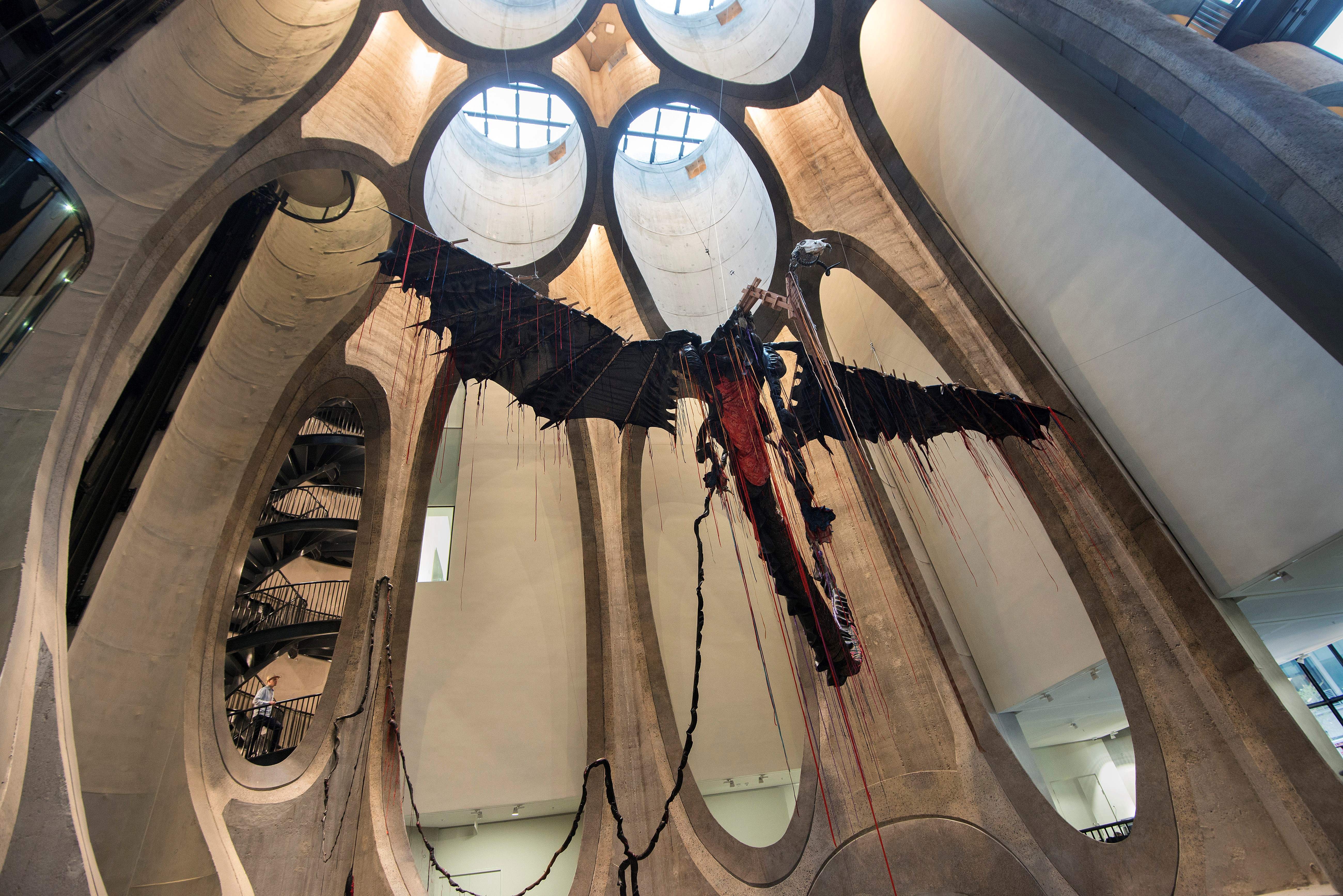
While we usually pay attention to museums because of what’s on their walls, sometimes the walls themselves are works of art. In the past 20 years, contemporary museum buildings have gained increasing significance, partly due to the changing nature of arts patronage. At the same time, many older museum buildings serve as cultural relics of their time (as well as houses for art collections).
Below, we’ve rounded up some of the most unusual museum buildings in the world and the stories behind their hallowed halls.
Milwaukee Art Museum
Architect Santiago Calatrava’s Milwaukee Art Museum in Milwaukee, Wisconsin on July 31, 2018. Photo By Raymond Boyd/Getty Images.
Location: Milwaukee, Wisconsin
Architect: Santiago Calatrava
Although shaped like a ship and offering similarly nautical views, the soaring main entry hall of the Milwaukee Art Museum was actually the architect’s interpretation of a Gothic church. Incorporating flying buttresses, arches, and ribbed vaults into the design, Calatrava—who also designed the Oculus at the World Trade Center in Manhattan—has said that he was inspired by Eero Saarinen’s original 1950s building for the museum, as well as the surrounding Midwestern topography.
Zeitz MOCAA
A visitor walks on a stairway in The Zeitz Museum of Contemporary African Art in Cape Town on September 15, 2017. Photo by Rodger Bosch /AFP/Getty Images.
Location: Cape Town, South Africa
Architect: Thomas Heatherwick redesign
To create the home of the first major contemporary art museum dedicated to art from the African continent, architect Thomas Heatherwick literally carved into the interior of the original building, which was once used for grain storage, to create an entirely new experience.
Musée Picasso Antibes
The Picasso Museum in Antibes. Photo: Wikimedia Commons.
Location: Antibes, France
Architect: Unknown (ca. 14th century)
Picasso’s one-time hideaway in Antibes, where he lived and worked during World War II, has since been turned into a museum dedicated to the artist’s work. Originally built as a residence for the rulers of Monaco in the middle ages, today the seaside castle houses works by Picasso—and offers unobstructed views of the Mediterranean.
Isabella Stewart Gardner Museum
The courtyard at the Isabella Stewart Gardner Museum, Boston. Photo by Sean Dungan, courtesy of the Isabella Stewart Gardner Museum.
Location: Boston, Massachusetts
Architect: Willard Sears
Although the museum is best known for a tragic theft, the building that houses the collection of Isabella Stewart Gardner is a cultural treasure in itself. Many of the columns, windows, and doorways are authentic Roman, Byzantine, Gothic, and Renaissance relics purchased by Gardner and her husband on trips to Italy—and Isabella herself was also heavily involved in the construction process. Architect Willard Sears’s diary reveals that she often forced him to take down and redo already-completed elements of the building, and in some cases she would get out a tool and do it herself.
MAXXI Museum
MAXXI Museum (2014). Courtesy of Antonella Profeta and Flickr.
Location: Rome, Italy
Architect: Zaha Hadid
It would be impossible to talk about the architecture of contemporary cultural sites without mentioning the late Zaha Hadid, the first woman architect to win the prestigious Pritzker Prize. Hadid designed museums on three continents, but this contemporary art and architecture museum in Rome, the Museo nazionale delle arti del XXI secolo, stands out as a perfect example of the architect’s all-encompassing style.
The National Museum of African American History and Culture
The National Museum of African American History and Culture. Courtesy Smithsonian Institution, National Museum of African American History and Culture Architectural Photography.
Location: Washington, DC
Architect: Lead designer David Adjaye and lead architect Philip Freelon
The inverted pyramid of this Smithsonian museum’s exterior scrim references the three-tiered crowns found in ancient Yoruban art. Since opening in 2016, the museum has won critical acclaim for both its exhibitions and the building that houses them.
Guggenheim Museum Bilbao
The Guggenheim, Bilbao. Photo: Wikimedia Commons.
Location: Bilbao, Spain
Architect: Frank Gehry
The OG of impressive museum design, Frank Gehry broke architecture wide open in his design for the Guggenheim Museum in Bilbao. The building is still considered one of the most important works of contemporary architecture nearly 25 years later.